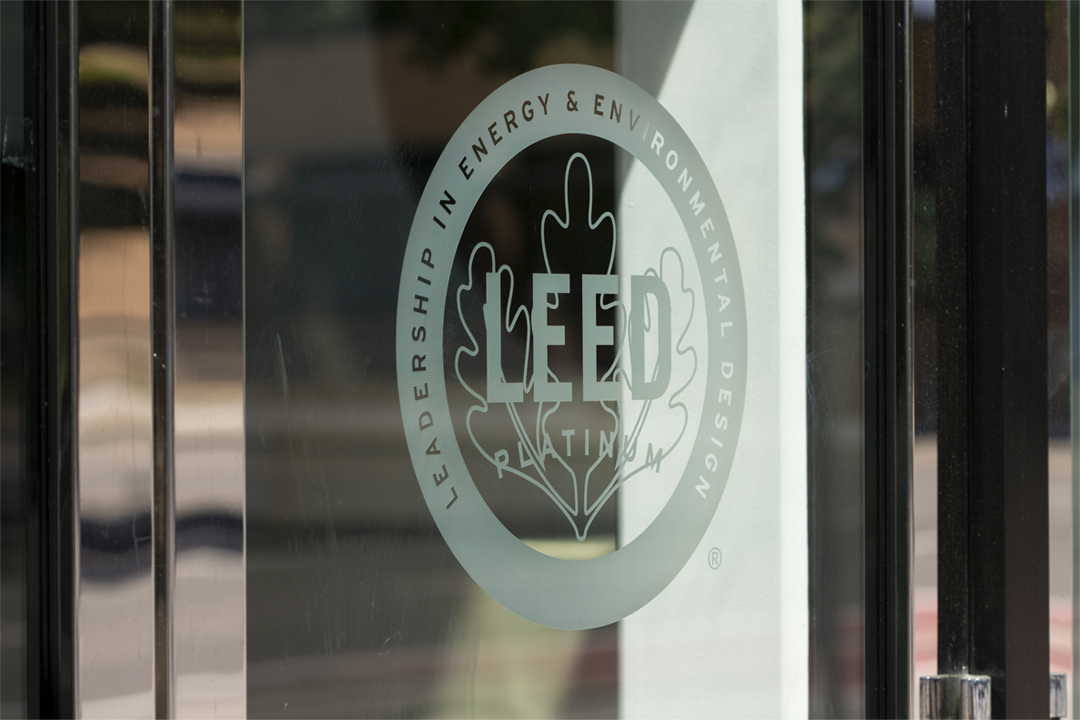

How Facilities Can Earn LEED Credits for COVID-19 Prevention
By Grainger Editorial Staff 8/19/21


To help businesses and communities respond to the COVID-19 crisis, the U.S. Green Building Council (USGBC) has updated the Leadership in Energy and Environmental Design (LEED) certification program for green buildings and developments. According to the USGBC, LEED certification can have benefits that include happier, healthier and more productive workplaces, along with the competitive advantage of sustainability. The new LEED credits support facility managers' efforts to help prevent the spread of COVID-19 as employees return to the office, and they may also make it easier to achieve LEED certification or higher levels of certification.
Green Cleaning & LEED Innovation Credits
LEED’s new Safety First pilot credits are designed to align with public health best practices to reduce the spread of COVID-19, making re-entry to the workplace safer and easier. The new pilot credits focus on operational areas that include cleaning and disinfecting practices, planning for safety when re-entering the workplace and indoor air and water quality. The pilot credits are available to LEED-certified projects and projects undergoing LEED certification.
LEED's Safety First pilot credits cover the following areas:
Cleaning and disinfecting. LEED provides the Cleaning and Disinfecting Your Space pilot credit for organizations that implement workplace decontamination and cleaning processes that are consistent with green cleaning best practices and that follow CDC and EPA guidelines related to COVID-19.
Workplace re-entry planning. Both the Re-enter Your Workspace and Arc Re-entry pilot credits focus on planning for return-to-work scenarios using planning tools developed by the American Institute of Architects and the technology company Arc Skoru.
Water system recommissioning. The Building Water System Recommissioning pilot credit supports efforts to reduce the risk that building occupants will be exposed to water that may be unsafe to drink. Reduced water usage or water system shutdowns can lead to stagnant water or other quality problems.
Indoor air quality. There are three LEED pilot credits that support building teams seeking to minimize transmission of infection disease through HVAC operations and design: Managing Indoor Air Quality During COVID-19 (operation of existing systems), Design for Indoor Air Quality and Infection Control (design of new systems) and Maintenance of HVAC Systems During COVID-19 (ongoing inspection and maintenance).
Pandemic planning and social equity. The LEED Safety First program also introduced two new credits specifically for cities and communities. The Pandemic Planning pilot credit is available to cities and communities that develop a plan to address the impacts of a pandemic on their unique environment. The Social Equity in Pandemic Planning pilot credit encourages equity in emergency planning and pandemic response.
What Are LEED Credits?
As part of the certification process, project teams identify LEED credits they want to pursue. Each credit is associated with a certain number of points. Some credits are worth a single point, while others can be worth five or more. A project must earn at least 40 credits to achieve certification. There are four LEED rating levels, based on the number of points projects earn:
- Certified (40 to 49 points)
- Silver (50 to 59 points)
- Gold (60 to 79 points)
- Platinum (80 or more points)
LEED pilot credits are new credits that have not yet been through the complete drafting and balloting process that the organization uses when developing new credits. USGBC answers common questions about the pilot credit program and other topics in its help center.
Taking advantage of Safety First and other LEED credits can help your facility reduce the impact of COVID-19 as employees return to work and help you reach sustainability goals. Learn more about Grainger’s Green Resources and schedule a free Facility Assessment.
The information contained in this article is intended for general information purposes only and is based on information available as of the initial date of publication. No representation is made that the information or references are complete or remain current. This article is not a substitute for review of current applicable government regulations, industry standards, or other standards specific to your business and/or activities and should not be construed as legal advice or opinion. Readers with specific questions should refer to the applicable standards or consult with an attorney.






